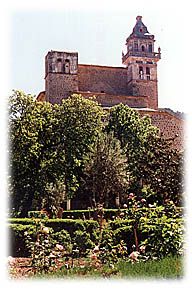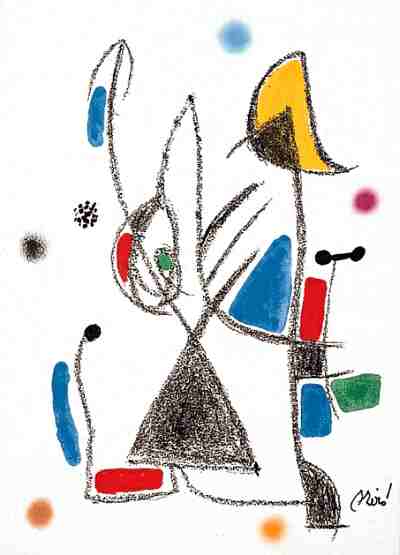Have you ever wondered why Michael Douglas and Catherine Zeta-Jones, the
King and the Queen of Spain, the German Prime Minister Mr. Schroeder, and
lots of VIPs select Mallorca for their vacations and getaways? Why not trying
to find it out by yourself?
|
Rafa Nadal
Baumann,Heinz
,Baumgart,Klaus ,Becker,Boris ,Berghoff,Dagmar ,Bohlen,Dieter Branson,Richard
,Breckwold,Edith, Carell,Rudi, Christiansen,Sabine , Clüver,Bernd , Cordalis, Costa,
Dietl,Harald ,Douglas,Michael , de Angelo,Nino , Drews,Jürgen, Elstner,Frank
, Engler,Hartmut ,Fendrich,Reinhard,
Giercke,Nikolaus , Gremm,Wolf , Grönemeyer,Herbert , Gundlach,Alida ,
Haas,Ludwig ,Hamnett,Katherine
Heino, Herrmann,Herbert ,Hönig,Heinz ,Hofer,Jan , Judith & Mel ,
Kahler,Günther ,Kaufmann,Christine
Kirchberger,Sonja ,Kock am Brink,Ulla , Kollo,Rene , Krüger,Mike ,Kühn,Matthias
,Lennox Annie ,Lyngstad,Annifrid , Maffay,Peter ,Mohn,Reinhard ,Nicholson,Jack
,Paul,Bernhard ,Petry,Wolfgang
Pfaff,Dieter ,Plate,Tina .Rauschmayer,Roland .Reinhard,Sabine .Ruge,Nina.Schautzer,Max.Schiffer,Claudia
Schmidt,Harald ,Schulze-Erdel,Werner ,Schützendorf,Hasso ,Schwarz,Bert
,Schwenko,Peter,Scott,Selina
Siegel,Ralph ,Steeb,Carl-Uwe ,Suarez,Adolfo .Sylvester,Erik .Thyssen. van
Bergen,Ingrid.von der Lippe,Jürgen
von Fürstenberg,Diane. von Koczian,Johanna .von Schweden,Birgitta .von
Württemberg,Diane
Weber,Jürgen .Weber,Gerry .Weber,Willy .Wedel,Dieter .Wellenbrink,Egon
.Wennemann,Klaus .
Wijnvoord,Harry .Ziegler,Regina .........
Enjoy exceptional panoramic views of the bay -- with frequent sailboat races.
(Don't forget your binoculars). Special features include a beautiful swimming
pool, a garden, barbecue, and a ping-pong table.
Claudia
Schiffer paid
a surprise visit to the Island last week to look at her new luxury summer
home in Camp de Mar in Mallorca. Perched on a hilltop, it has the most glorious
views of the Bay.
This was the first time that Claudia had visited the site since building began.
Completion of the 130 million peseta - six million pounds - house is expected
by the end of the year. fb
Claudia has spent
most of her summer holidays here since she was a child and there is increasing
speculation that she will return in August as usual but this time maybe to her
WEDDING with her actual boyfriend.

Douglas
Michael & Catherin Z Jones : fb
Actor
and producer, he was born on September 25, 1944 in New Brunswick, New Jersey.
He is married to Diandra Douglas and they have one son.He began his career as
an assistant director on father Kirk Douglas's 1960s films. He
and his wife own a house in Mallorca called s'Estaca, previously the home of
the Archduke Ludwig Salvator of Austria, which they have restored .
Costa Nord.


MALLORQUINES ILUSTRES
I  MALLORCA II MALLORCA II

Ramon Llull
(1235-1316) was
a wealthy courtier n Palma until a disastrous seduction attempt led him to retire
to Puig de Randa in isolation. Devoting himself to prayer and study, he wrote
in Catalan and Latin on every thing from algebra to metaphysics; he is widely
seen as the father of the Catalan language Recalled to the court by Jaume II,
he established an Oriental language school at Valldemossa and learnt Arabic
with the help of a Moorish slave. He was stoned to death attempting to convert
Muslims in Tunisia
Junipero Serra
The Mallorcan missionary,
Junipero Serra (1713-84), is honoured in the Capitol in Washington as 'the founder
of California'. Of course California was there already; but it was Serra, sent
there at the age of 54 after 14 years in Mexico, who established the missions
which have grown into some of Americans biggest cities, including San Diego
and San Francisco. A museum in his home town of Petra tells the story. He was
beatified in 1988, the first step on the road to sainthood.
Frédéric
Chopin

Born Zelazowa Wola (Poland 1810 - Paris 1849).
150 years ago,
Chopin spent a winter in Mallorca (Valldemossa). During this time a wrote letters
to his friends in Paris in which he mentioned his love for the island and also
his rave against the people living on the island. It is also believe that he
had a mistress "George Sand" here in Mallorca.
The son of French
émigré father (a schoolteacher working in Poland) and a cultured
Polish mother, he grew up in Warsaw, taking childhood music lessons (in Bach
and the Viennese Classics) from Wojciech Zywny and Jósef Elsner before
entering the Conservatory (1826-9). By this time he had performed in local salons
and composed several rondos, polonaises and mazurkas. Public and critical acclaim
increased during the years 1829-30 when he gave concerts in Vienna and Warsaw,
but his despair over the political repression in Poland, coupled with his musical
ambitions, led him to move to Paris in 1831. There, with practical help from
Kalkbrenner and Pleyel, praise from Liszt, Fétis and Schumann and introductions
into the highest society, he quickly established himself as a private teacher
and salon performer, his legendary artist's image being enhanced by frail health
(he had tuberculosis), attractive looks, sensitive playing, a courteous manner
and the piquancy attaching to self-exile. Of his several romantic affairs, the
most talked about was that with the novelist George Sand (Aurore Dudevant) though
whether he was truly drawn to women must remain in doubt. Between 1838 and 1847
their relationship, with a strong element of the maternal on her side, coincided
with one of his most productive creative periods. He gave few public concerts,
though his playing was much praised, and he published much of his best music
simultaneously in Paris, London and Leipzig. The breach with Sand was followed
by a rapid deterioration in his health and a long visit to Britain (1848). His
funeral at the Madeleine was attended by nearly 3000 people.
No great composer
has devoted himself as exclusively to the piano as Chopin. By all accounts an
inspired improviser, he composed while playing, writing down his thoughts only
with difficulty. But he was no mere dreamer - his development can be seen as
an ever more sophisticated improvisation on the classical principle of departure
and return. For the concert-giving years 1828-32 he wrote brilliant virtuoso
pieces (e.g. rondos) and music for piano and orchestra; the teaching side of
his career is represented by the studies, preludes, nocturnes, waltzes, impromptus
and mazurkas, polished pieces of moderate difficulty. The large-scale works
- the later polonaises, scherzos, ballades, sonatas, the Barcarolle and the
dramatic Polonaise-fantaisie - he wrote for himself and a small circle of admirers.
Apart from the national feeling in the Polish dances, and possibly some narrative
background to the ballades, he intended notably few references to literary,
pictorial or autobiographical ideas.
Chopin is admired
above all for his great originality in exploiting the piano. While his own playing
style was famous for its subtlety and restraint, its exquisite delicacy in contrast
with the spectacular feats of pianism then reigning in Paris, most of his works
have a simple texture of accompanied melody. From this he derived endless variety,
using wide-compass broken chords, the sustaining pedal and a combination of
highly expressive melodies, some in inner voices. Similarly, though most of
his works are basically ternary in form, they show great resource in the way
the return is varied, delayed, foreshortened or extended, often with a brilliant
coda added.
Chopin's harmony
however was conspicuously innovatory. Through melodic clashes, ambiguous chords,
delayed or surprising cadences, remote or sliding modulations (sometimes many
in quick succession), unresolved dominant 7ths and occasionally excursions into
pure chromaticism or modality, he pushed the accepted procedures of dissonance
and key info previously unexplored territory. This profound influence can be
traced alike in the music of Liszt, Wagner, Fauré, Debussy, Grieg, Albéniz,
Tchaikovsky, Rachmaninov and many others.
Joan Miró

Spanish painter,
whose surrealist works, with their subject matter drawn from the realm of memory
and imaginative fantasy, are some of the most original of the 20th century.
Miró was
born April 20, 1893, in Barcelona and studied at the Barcelona School of Fine
Arts and the Academia Galí. His work before 1920 shows wide-ranging influences,
including the bright colors of the Fauves, the broken forms of cubism, and the
powerful, flat two-dimensionality of Catalan folk art and Romanesque church
frescoes of his native Spain. He moved to Paris in 1920, where, under the influence
of surrealist poets and writers, he evolved his mature style. Miró drew
on memory, fantasy, and the irrational to create works of art that are visual
analogues of surrealist poetry. These dreamlike visions, such as Harlequin's
Carnival or Dutch Interior, often have a whimsical or humorous quality, containing
images of playfully distorted animal forms, twisted organic shapes, and odd
geometric constructions.
The forms of his
paintings are organized against flat neutral backgrounds and are painted in
a limited range of bright colors, especially blue, red, yellow, green, and black.
Amorphous amoebic shapes alternate with sharply drawn lines, spots, and curlicues,
all positioned on the canvas with seeming nonchalance. Miró later produced
highly generalized, ethereal works in which his organic forms and figures are
reduced to abstract spots, lines, and bursts of colors.
Miró also
experimented in a wide array of other media, devoting himself to etchings and
lithographs for several years in the 1950s and also working in watercolor, pastel,
collage, and paint on copper and masonite. His ceramic sculptures are especially
notable, in particular his two large ceramic murals for the UNESCO building
in Paris (Wall of the Moon and Wall of the Sun, 1957-59).
Miró died
in Son Abrines, Palma de Mallorca, Spain, on December 25, 1983, after sending
the rest of his later years on the Island. In 1992 the Fundació Pilar
i Joan Miró was established in Mallorca.
|
|
|
![]() MALLORCA
MALLORCA![]() MALLORCA
MALLORCA